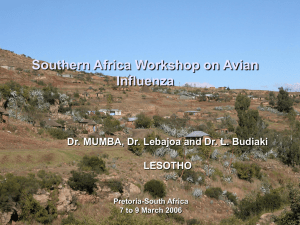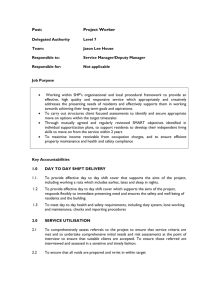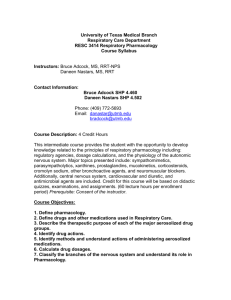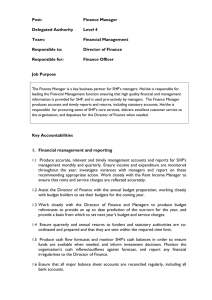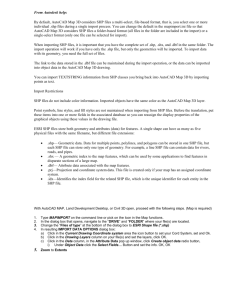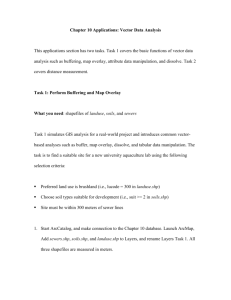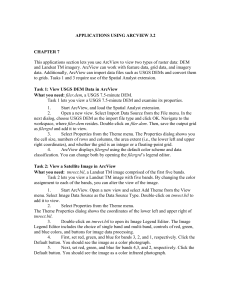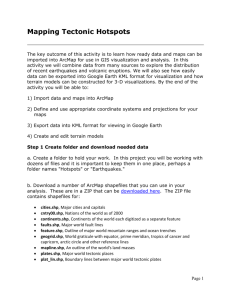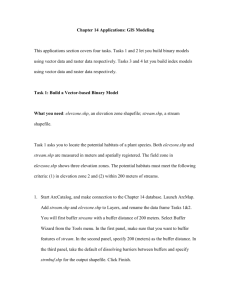ppt
advertisement
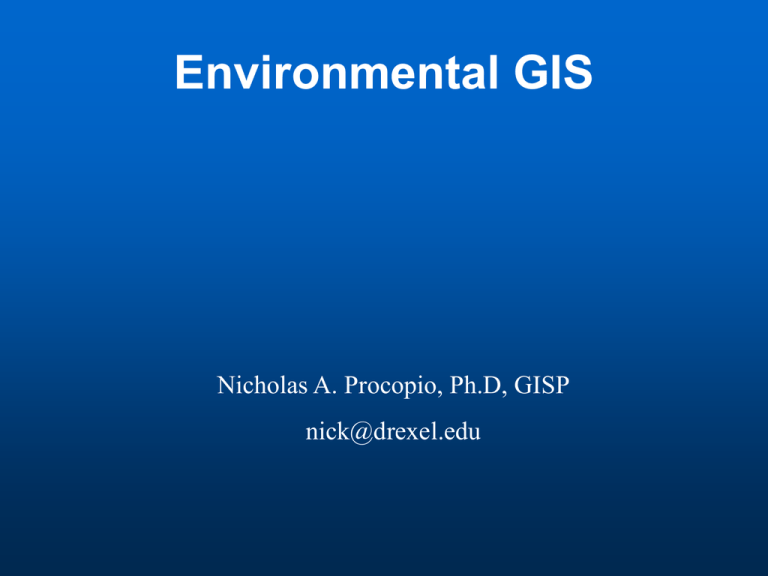
Environmental GIS Nicholas A. Procopio, Ph.D, GISP nick@drexel.edu Analyzing species point data Activity Range Probability range Nearest Neighbors Spatial autocorrelation Activity Range Minimum Convex Polygons • completely encloses all data points by connecting the outer locations in such a way as to create a convex polygon. • Describes the Activity Range Activity Range An activity range, as defined with the minimum convex-polygon method, consists of the area bounded by the outermost telemetry locations of an animal. Core Activity Area The kernel method can be used to estimate general (95% isopleth) and core (50% isopleth) activity areas corresponding to the intensity of activity in an area Other percentiles can also be used. Uses a kernaling methodolgy which is dependent on a SELECTED bandwidth. Kernal Estimation weights points that are further away less than those that are close. Kernel estimation attempts to obtain a smooth estimate of the probability density (aka a smoothed histogram). Issues: choice of ‘kernel’, bandwidth Bandwidth is all important • • • • This raises an obvious issue with modelling continuous processes…..the scale (in this case the bandwidth) must be carefully considered. Striking a balance between too small a bandwidth (possible high errors for some predictions) and a large bandwidth (low errors in all predictions) is essential. Knowledge of the biology and ecology of the system is important to making these types of judgments. It really becomes “plug and play”. Use with ArcMap 10 Use Hawth’s Tools with earlier versions of ArcMap http://www.spatialecology.com/gme/ •Uses a separate command line interface. •Has good command assistance. •Generates spatial files (shapefile or raster) that can be added into ArcMap. Individual MCPs genmcp(in="c:\du\points.shp", out="c:\du\points_mcp.shp", uidfield="Id"); or genmcp(in="c:\du\points.shp", out="c:\du\points_mcp2.shp", where="Id=2"); A single MCP genmcp(in="c:\du\points.shp", out="c:\du\points_mcp.shp"); Location points to movement path Requires a unique id field and an order field convert.pointstolines(in="c:\du\points.shp", uidfield="Id", orderfield="rec", out="c:\du\point_lines.shp"); Generate Probable Activity Areas •Note that the 50%, 90% or 95% polygon area that is generated represents that percentage of the area (or volume) of coincidence. •This is based on the distribution of the points and will not necessarily include i.e. 50% of the points. •It shows an estimate of where the critter could have been found i.e. 50% of the time. •It is an interpolation of the data. Generate Probable Activity Areas 2 step process Generate Probable Activity Areas 2 step process Generate the Kernal Density raster: kde(in="C:\du\points.shp", out="C:\du\kde5_30", bandwidth=100000, cellsize = 30, where="Id=1"); WHERE clause: Id=1 KDE completed successfully Generate the Isopleth layer isopleth(in="C:\du\kde5_30", out="C:\du\isopleths5_30.shp", quantiles=c(0.5, 0.9, 0.95)); The input quantiles were used to determine the raster value at which to calculate the isopleth lines as follows: Quantile, Isopleth Value 0.5, 0.103690887913028 0.9, 0.0316148920235371 0.95, 0.0180086184523985 3 isopleths processed. Probable activity areas Probable activity areas Probable activity areas increased bandwidth (500,000) Probable activity areas decreased bandwidth (10,000) Other meaningful stats. total distance moved (the sum of all linear distances between locations) range length (linear distance between the two most distant locations) mean distance moved per day (total distance moved, divided by the total number of days monitored) and mean distance per move (average of all distances between locations). The distance moved from hibernaculum (linear distance between the hibernaculum and the most distant location).
